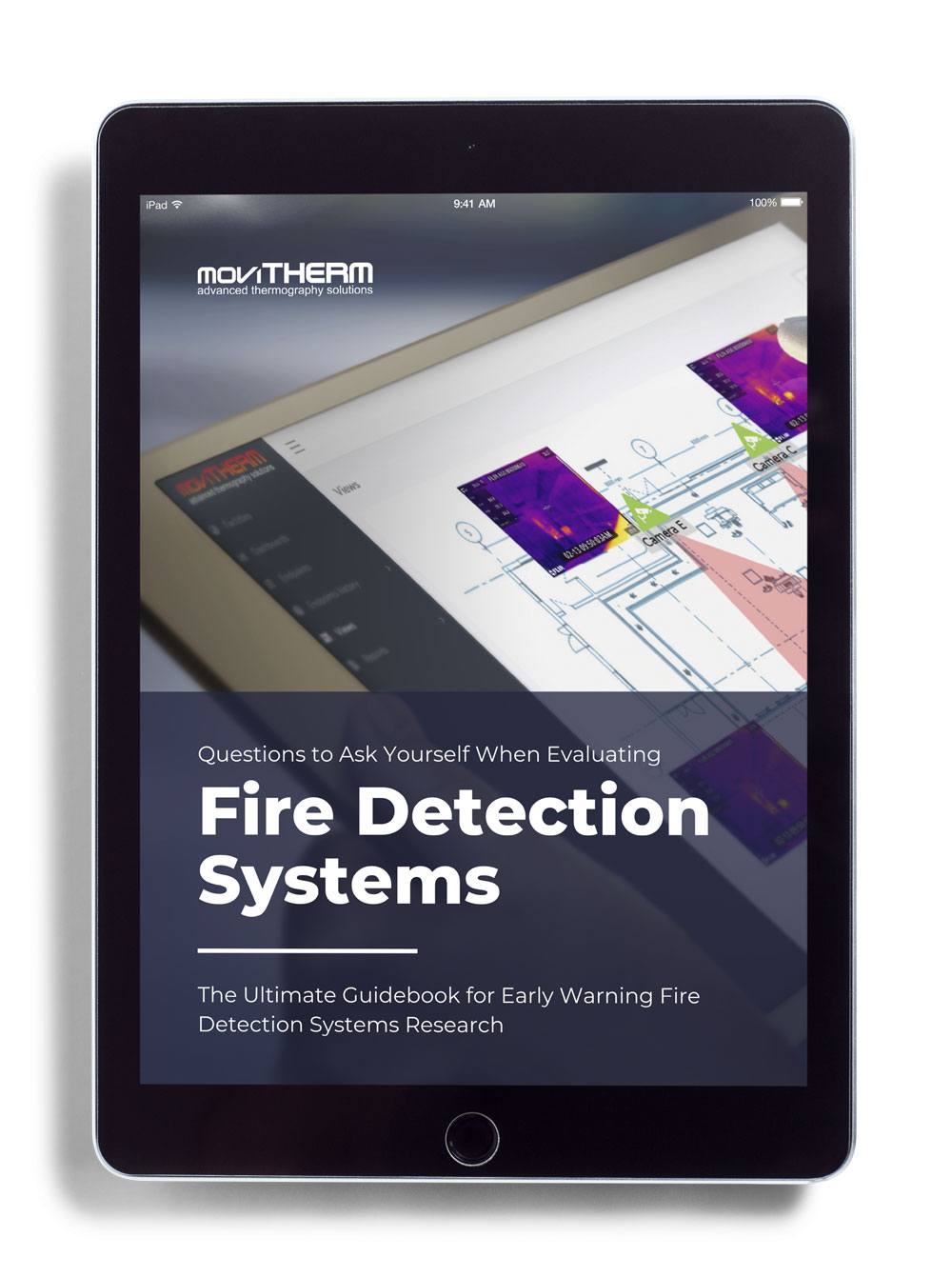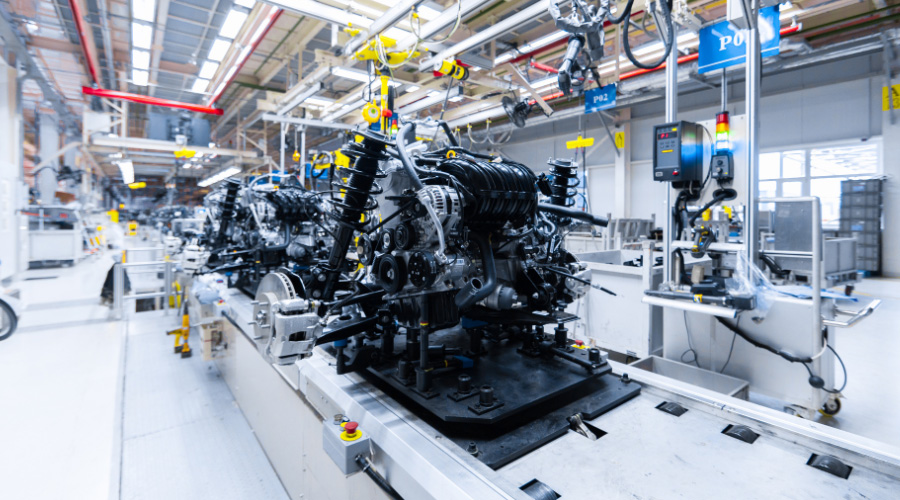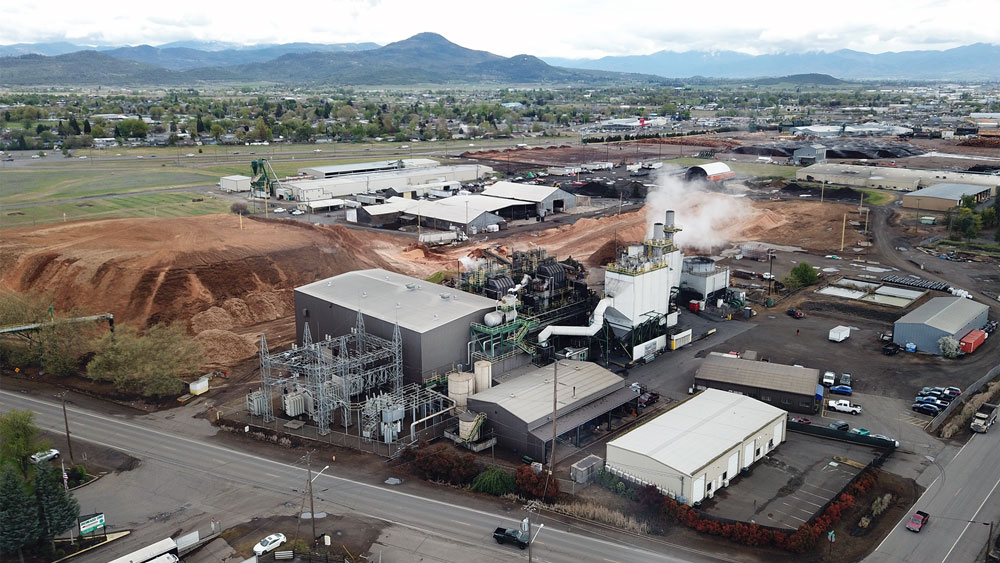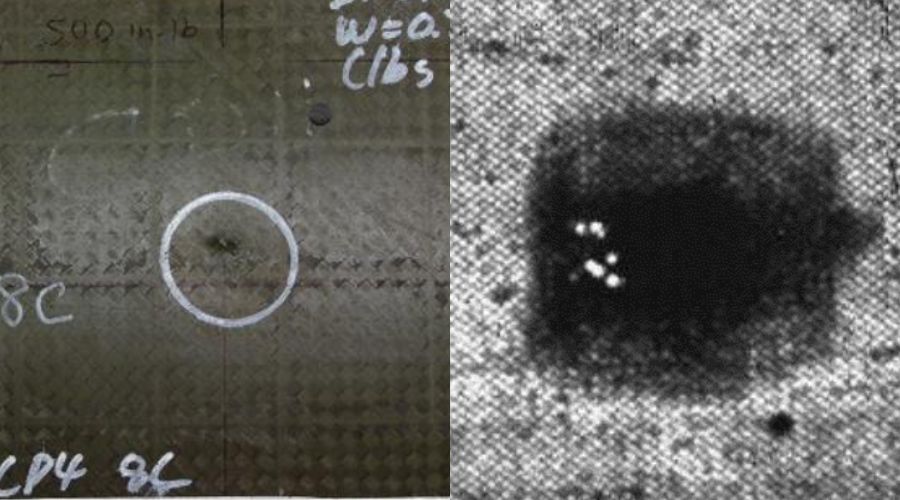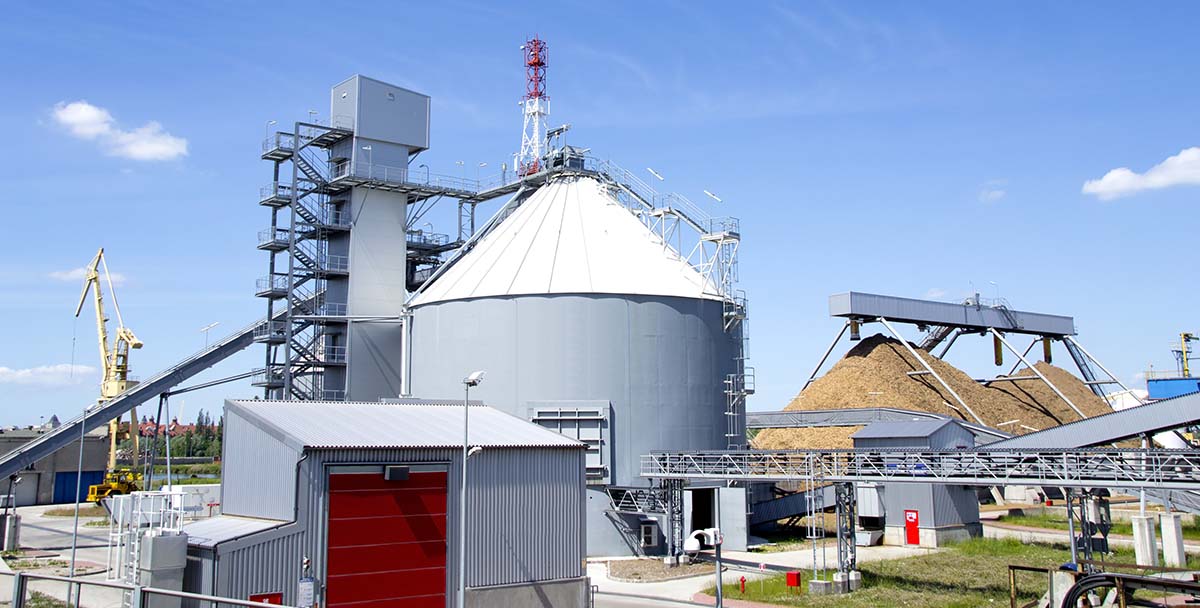
Biomass Pile Monitoring Applications for Fire Prevention
Overview
Biomass Power Generation facilities are finding ways to mitigate and prevent fire damage by implementing the Industrial Internet of Things (IIoT) with early fire detection technologies, like infrared cameras.
Biomass Power Generation facilities use renewable organic material from plants and animals as a fuel source to generate electricity for industrial and commercial applications. Biomass materials are transported to the generation plant, stored in piles or silos, and burned in a boiler to produce high-pressure steam to drive the rotation of a series of turbine blades connected to a generator that produces electricity. During the storage phase, the biomass materials are most susceptible to fire.
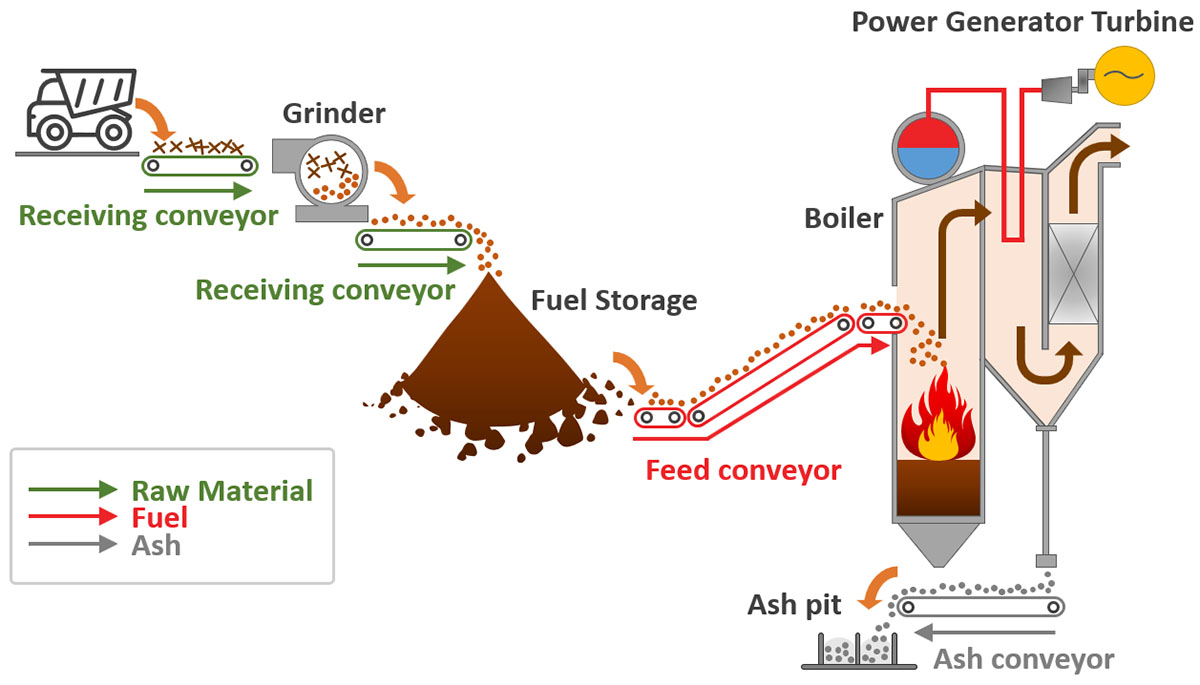
Biomass Pile Monitoring Diagram
Biomass is commonly stored in bulk outdoor piles near the power generation facility. These mounds of material are especially prone to self-heating as they naturally decompose. The decomposition process is accelerated as moisture is introduced from rain and humidity, generating even more heat. As most biomass materials are good insulators, the internal pile heat generated is not allowed to escape and cool, thus increasing temperatures and spreading to a larger internal area. Eventually, the material begins to smolder. Smoldering and flameless fires are more easily ignited than flaming fires and more challenging to extinguish.
The early detection of a bulk pile fire is critical if a biomass fire is to be avoided. Unfortunately, though, detecting early-stage fire formation within a bulk pile fire is difficult. For example, the surface temperature of a pile may be at ambient while the internal temperature could be more than 200°C. Traditional methods using linear heat detection cable can be used but are susceptible to damage during material transport and generally not recommended. Spot measurements are also used but do not detect gradient effects. Monitoring the temperature trends over time is generally more helpful in detecting the early onset of heating where mitigation measures can be deployed before the situation becomes dangerous.
Early Fire Detection using Infrared (IR) Camera Systems
IR camera systems are the first to alert before a fire develops. They see a warming-up of material early in the fire development process before forming smoke particles or flames.
IR cameras operate on the heat transfer principle of radiation. The infrared camera has a focal plane array of detector elements that sense infrared light radiated from object surfaces. The radiation captured by the infrared camera detector is digitized, converted to data, and displayed as a viewable image. Calibrated IR cameras can report temperature measurements from specific spots, lines, and areas on live or recorded images. IR cameras are available in different wavebands, pixel resolutions, lens configurations, and communication protocols to meet various installation requirements.
What is IIoT (Industrial Internet of Things)?
The “industrial internet of things” (IIoT) refers to interconnected sensors, instruments, and other devices networked into industrial software applications that use advanced predictive analytics and artificial intelligence (AI). These connected networks create systems that can monitor, collect, exchange, analyze, and deliver valuable insights into a system or process. IIoT is revolutionizing automation by using cloud computing to simplify integration and enhance process control.
IIoT and Early Fire Detection (EFD)
Fire safety is an area that can realize the benefits of IIoT when combined with infrared camera systems. By connecting sensors that alert at different stages of fire development and varying conditions for fire formation, potential fires can more readily be detected and prevented. With IIoT, safety alerts are sent to hundreds of people quickly and effectively. Communication options include the capability to communicate via voice calls, text, and email to targeted recipients, thus helping create quick and effective awareness. Another advantage to IIoT EFD is scalability. Facility managers can connect multiple facilities into a central monitoring and alarming dashboard. Understanding the situation at all facilities improves the oversight and management of multiple systems from a single control point.
IIoT EFD systems can improve emergency planning by using algorithms and analytics to help quickly prepare better emergency and evacuation plans. For example, analytics can consider factors such as the number of people in the facility, facility maps, location of the fire, the rate at which fire is spreading, and the direction of the fire to come up with better evacuation plans. Analytics-based evacuation plans can prevent congestion by guiding workers to different locations for optimum evacuation routing.
Advantages to IIoT EFD with Infrared Camera systems are summarized below:
- IR cameras to detect fire formation at the earliest stages.
- Fast and broad notification to keep workers out of harm’s way.
- Cloud-based connectivity and computing minimize hardware requirements.
- Automatic software updates keep systems running optimally.
- Capability to trigger external processes, alarms, and extinguishing systems.
MoviTHERM has effectively deployed IIoT EFD systems for biomass pile monitoring. These systems integrate multiple fire detection and monitoring technologies to track critical temperatures and detect smoke particles at critical locations within the power generation facility. These systems alert the appropriate personnel when temperatures exceed expected limits or when smoke particles are present within the environment.
The following graphic illustrates a sample MoviTHERM IIoT Early Fire Detection solution for pile monitoring.
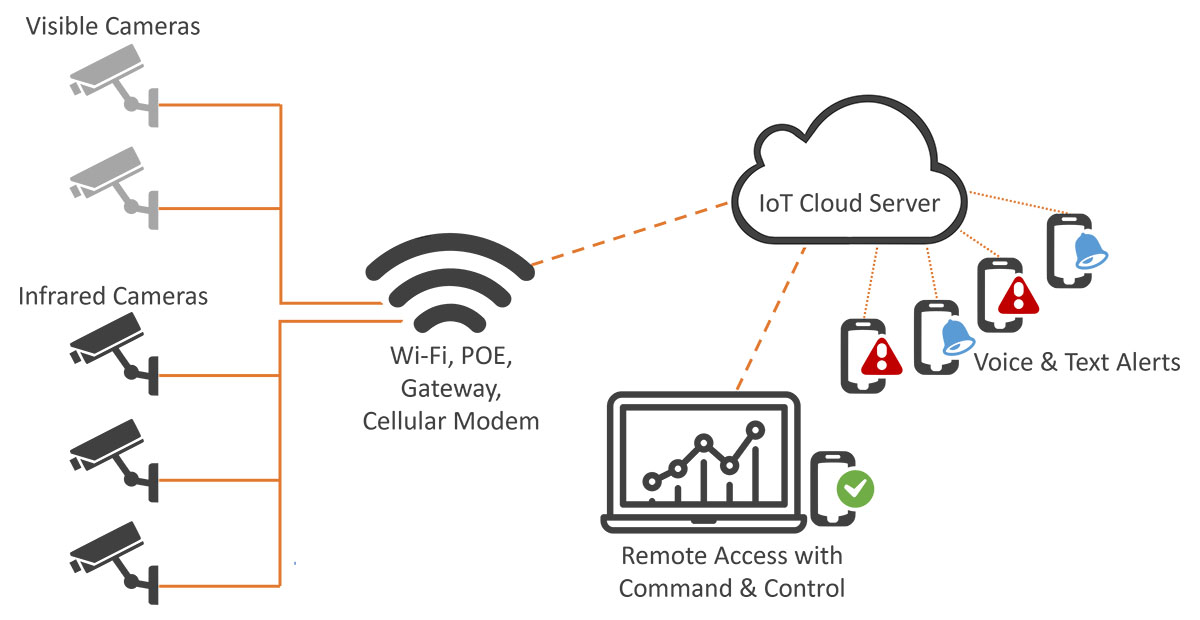
iEFD IIoT Pile Monitoring Diagram
Conclusion
It is important to note that the system discussed is not designed to replace existing fire detection and response protocols. Instead, the system functions as an early warning system – detecting areas where ignition may occur. Additionally, new detection methods for heat, smoke, and fire are in continual development. Many new detection devices include wireless capabilities that make integration into an IIoT EFD a straightforward exercise. Beyond alarms and notifications, IIoT EFD systems can provide automation controls like initiating and directing an extinguishing system.
Because IIoT EFD systems leverage cloud computing, they require less hardware with a reduced installation burden than legacy detection systems. Available communication technology can be added to existing detectors making IIoT retrofitting of existing systems an easy process. By warning earlier on the pathway to ignition, those responsible for biomass bulk management can avert costly and potentially life-threatening fires before they are permitted to start and spread.
MoviTHERM has installed IIoT EFD systems for biomass pile monitoring in power generation facilities and has the expertise to advise facility owners and managers about how to upgrade existing monitoiring systems or prescribe new IIoT EFD systems.
About MoviTHERM:
MoviTHERM – Advanced Thermography solutions was founded in 1999. The company offers solutions for plastic welding, package sealing, and non-destructive testing. In addition, MoviTHERM provides IoT Cloud monitoring solutions for thermal imaging applications for early fire detection, machine condition monitoring, and other applications. MoviTHERM is a Teledyne FLIR Premium Partner and master distributor for FLIR Thermal Cameras for automation and science applications.

